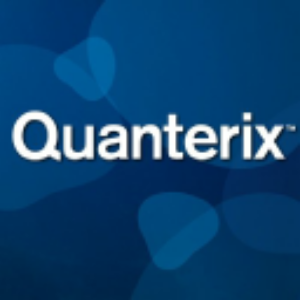Quanterix Presents Data Demonstrating Successful Multi-Marker Approach for Alzheimer’s Disease Detection that is More Effective than Standalone Plasma p-Tau 217
Quanterix improves on its best-in-class p-Tau 217 standalone test with new multi-marker approach reducing the number of patients receiving uncertain results
Recent Alzheimer’s Association criteria for diagnosing Alzheimer’s recommends that plasma p-Tau 217 tests be designed with two cutoffs to confidently differentiate between patients with or without AD pathology. This two-cutoff approach maximizes the accuracy of a p-Tau 217 test but leaves a zone of intermediate risk between the two cutoffs representing inconclusive borderline amyloid status. It is desirable to reduce this intermediate region while preserving a test’s accuracy to reduce the number of patients receiving inconclusive results.
Quanterix investigated whether interrogating intermediate samples with a panel of additional Alzheimer’s-associated plasma biomarkers, including combinations of amyloid β 42, amyloid β 40, GFAP, and NfL, together with p-Tau 217 in an algorithm that provides a single risk score, would improve the amyloid classification of uncertain results compared to a stand-alone p-Tau 217 test. The research found that this multi-marker approach enabled accurate amyloid classifications for 151 of 228 previously uncertain results across a large, high-diversity cohort of symptomatic individuals, reducing the intermediate zone 3-fold from
“Quanterix’s Simoa technology is an exceptionally sensitive platform, which when combined with our digital p-Tau 217 assay, has provided a result for all samples tested,” said Masoud Toloue, CEO of Quanterix. “In over 2,000 samples tested, our LucentAD p-Tau 217 assay has yet to encounter a single result that is unreadable and combines this sensitivity with an overall accuracy above
Quanterix is currently investing in further studies to evaluate multi-marker testing and expects to launch a multi-marker laboratory developed test later this year through its LucentAD product line. LucentAD consists of a menu of laboratory developed tests run under CLIA and focused on applications supporting Alzheimer’s diagnosis and treatment.
This work is being presented in a virtual poster entitled, “Multi-Marker Approach to Reducing the Intermediate Range of a High Accuracy 2-Cutoff Plasma p-Tau 217 Test for Amyloid Detection,” poster 95706, throughout AAIC. Quanterix will be at AAIC (7/28 – 8/1) at booth #730. Interested parties can schedule time to meet with Quanterix team members onsite using the event website: (https://www.quanterix.com/conferences/alzheimers-association-international-conference-aaic-2024/).
To learn more about Lucent Diagnostics, visit: https://www.lucentdiagnostics.com/.
For more information about Quanterix’s work in neurology, visit: https://www.quanterix.com/therapeutic-areas/neurology/.
About Quanterix
From discovery to diagnostics, Quanterix’s ultrasensitive biomarker detection is fueling breakthroughs only made possible through its unparalleled sensitivity and flexibility. The Company’s Simoa® technology has delivered the gold standard for earlier biomarker detection in blood, serum or plasma, with the ability to quantify proteins that are far lower than the Limit of Quantification (LoQ) of conventional analog methods. Its industry-leading precision instruments, digital immunoassay technology and CLIA-certified Accelerator laboratory have supported research that advances disease understanding and management in neurology, oncology, immunology, cardiology and infectious disease. Quanterix has been a trusted partner of the scientific community for nearly two decades, powering research published in more than 2,900 peer-reviewed journals. Find additional information about the
View source version on businesswire.com: https://www.businesswire.com/news/home/20240729813152/en/
Media:
PAN Communications
Maya Nimnicht
(510) 334-6273
quanterix@pancomm.com
Investor Relations:
Francis Pruell, Quanterix
(508) 789-1725
ir@quanterix.com
Source: Quanterix Corporation






